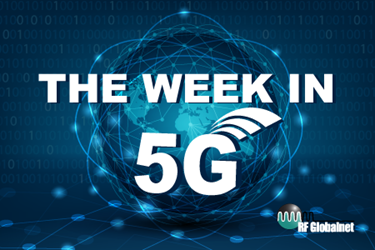The Week in 5G: 9/15/2020 — Dish Taps Nokia For 5G Core Software; Gamers Willing To Pay More For Better Online Performance
By Ed Biller

A new report commissioned by Ribbon Communications claims there exists a $150 billion incremental revenue opportunity, per year, in cloud gaming for 5G operators due to the perks of lower network latency, higher throughput, and increased reliability.
An online and email survey of over 5,000 ‘ardent gamers’ in Germany, Japan, South Korea, the UK and the US, carried out by Sapio Research in April and May 2020 discovered 58% of those surveyed already pay a premium to secure the best possible gaming performance, 95% would pay more for an improved experience, and 58% would switch providers if a competitor offered a high-quality gaming service with a new 5G subscription.
Meanwhile, at the University of Kansas School of Nursing, T-Mobile has teamed with students and the KU Center for Design Research (CDR) to apply 5G technologies to nurse education and distance learning initiatives.
“This multi-year program aims to find new and creative ways to educate and train nurses across a variety of settings – whether they are attending a university, conducting research in a lab or working in a rural clinic or large metropolitan hospital,” states a T-Mobile press release
In network rollout news, U.S. satellite TV provider Dish Network has inked its first deal with a traditional telecoms equipment supplier, Nokia, leveraging the latter’s 5G core software.
Dish plans to base its network on Open Radio Access Networks (RAN) that use software to run network functions on the cloud, reducing the use of physical equipment, reports Reuters. The provider also has inked deals with “Fujitsu, Nvidia, Altiostar and Mavenir to supply various parts of the network.”
Related, the U.S. Federal Communications Commission this week held a forum on 5G open RAN, heaping praise on the technology’s potential to “to lower costs, fuel competition by improving the stature of U.S. companies in the RAN, and blunt the rise and potentially nefarious incursions of Chinese equipment vendors.”
However, writes Matt Kapko of SDxCentral, “overcoming myriad competing interests to achieve even some of those goals is an ongoing challenge with no apparent resolution in sight. Moreover, the hype and widespread interest in open RAN comes as 5G network deployments are already in full swing among leading network operators.”
Of course, network rollouts depend on available spectrum. This week, Morris Lore at Light Reading discussed the arbitrary nature of cash-grab 5G spectrum auctions, comparing recent auctions in both the Netherlands and Austria.
“T-Mobile Austria, which has started referring to itself as Magenta Telekom, spent just €86.4 million ($102.6 million) on 40MHz in the 700MHz band, a 30MHz license at 1500MHz and another 30MHz of 2100MHz spectrum. T-Mobile Netherlands, its sibling, had to cough up €726 million ($862 million) for a stingier 70MHz across the 700MHz, 1400MHz and 2100MHz ranges,” writes Lore.
“The licenses are valid over similar periods, too. In the Netherlands, they expire in 2041. In Austria, they will need renewing in 2044.”
Mihoko Matsubara, Chief Cybersecurity Strategist at NTT Corporation, writes on the Lawfare Institute’s blog that Japan has set “a model for global cooperation” in handling its 5G network rollouts — including a cross-vendor approach to infrastructure, tax incentives that “encourage industry to ensure credibility, openness to international standards, security and supply sustainability,” and 5G spectrum that was allocated, rather than auctioned, putting “Japanese telecoms… under less near-term financial pressure to monetize their 5G services than their counterparts in other countries.”
Matsubara notes that, rather than banning some vendors alleging security concerns, “Japan has driven 5G supply-chain risk management by adopting a multivendor approach and fostering international partnerships for innovation and standards-setting.”
